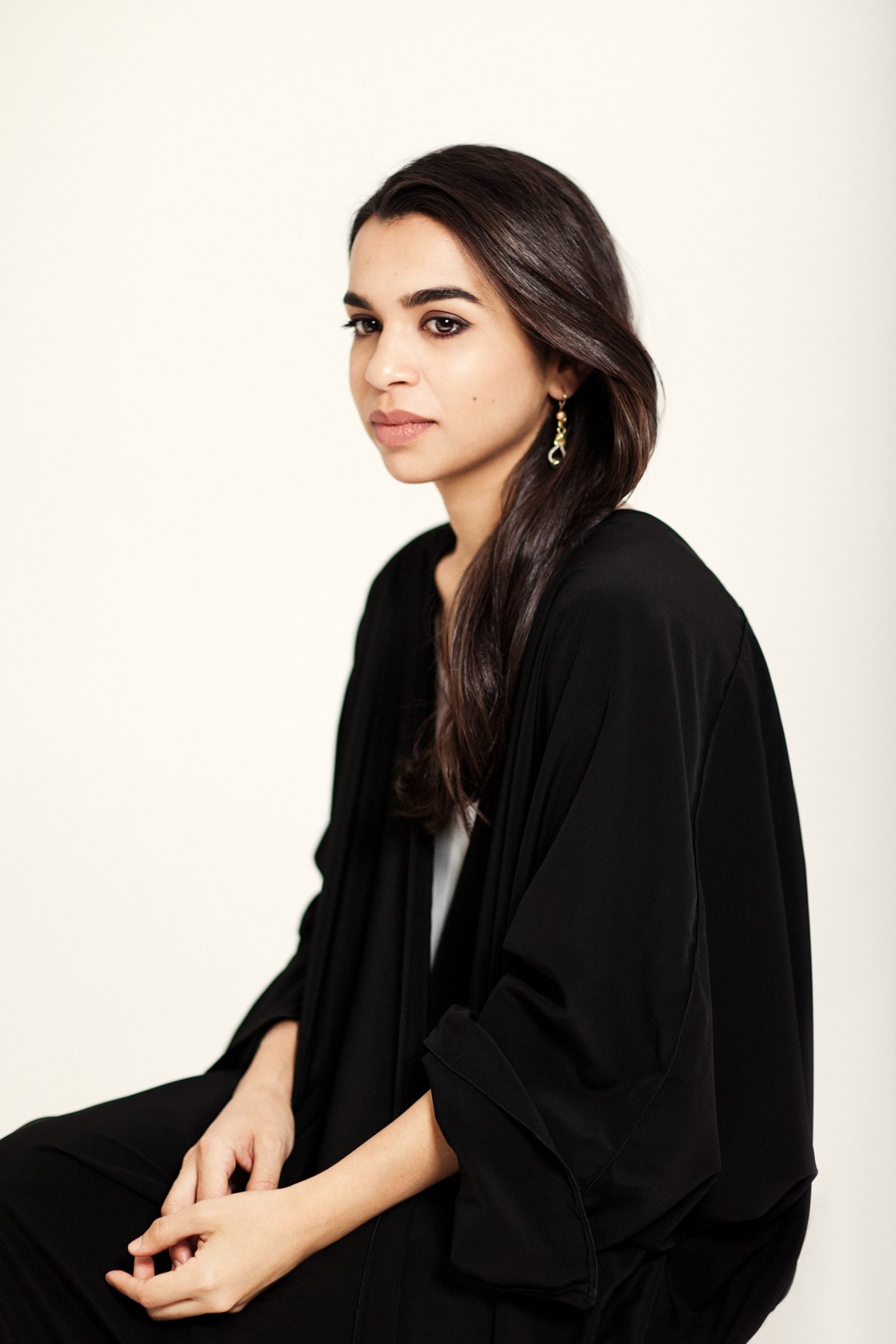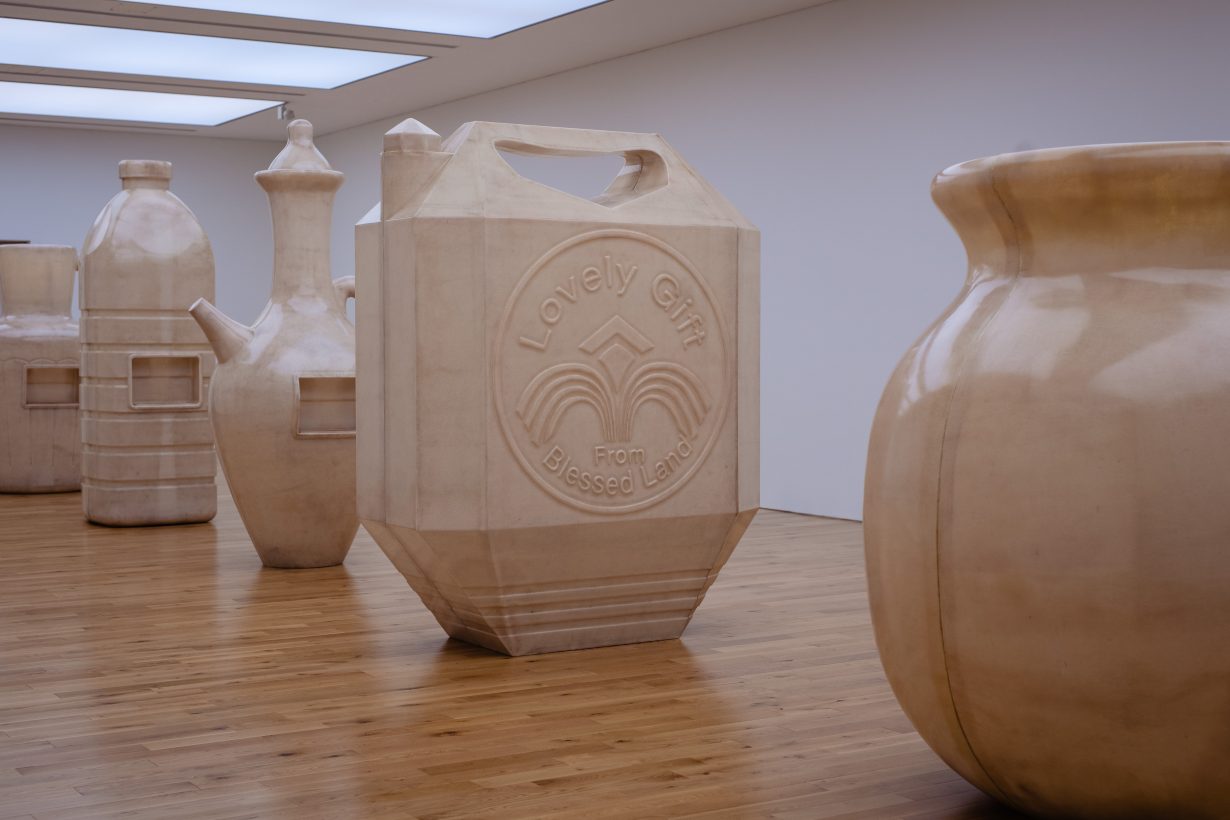
ArtReview Could you tell us a bit more about your project for Artes Mundi and what form it takes?
Alia Farid is nominated for Artes Mundi 10 alongside Mounira Al Solh, Rushdi Anwar, Carolina Caycedo, Naomi Rincón Gallardo, Taloi Havini and Nguyễn Trinh Thi. This year’s 10th anniversary prize is presented with the Bagri Foundation and will be awarded to an established international artist whose practice has ‘significantly contributed to art that resonates with our times’. An exhibition of work by the nominees is now open across five venue partners in Wales, with the seven artists presenting major solo projects that ‘collectively address issues surrounding land use, territory and displacement through histories of environmental change, conflict and enforced migration, conditions that speak to us all today’. The winner will be announced in January. ArtReview is a media partner of Artes Mundi 10.
Alia Farid I’m showing work that I have been developing since 2019 on both sides of the Kuwait-Iraq border. In the first gallery, In Lieu of What Is comprises sculpture/drinking fountains made from polyester resin, which is a form of plastic and a byproduct of oil. Historically, water offerings, called sabil in Arabic, took the shape of a bisque-fired clay pot filled with water from the Shatt al-Arab River. With the advent of oil, the infrastructure and material culture of the region changed enormously. Kuwait went from being a mud city to a modern city in less than 25 years. Today sabil drinking fountains are attached to a vast water distribution network supplied by desalination plants. My work in Artes Mundi examines the impact of colonial borders and resource extraction on the land and social fabric of Kuwait and southern Iraq, up the Shatt al-Arab River to where the Tigris and Euphrates meet, where encapsulated beneath the subsoil of the Iraqi marshes lie some of the biggest oil reserves in the world.
AR Are there other artists, groups or individuals who serve as an inspiration for your work?
AF Many! I love the poetry of Lamia Abbas Amarah, the work of Cecilia Vicuña, Michy Marxuach, Abdullah Al Mutairi, Amal Khalaf, Kamala Ibrahim Ishag, Gala Porras-Kim, Muhmmed Almubarak, Mohammad Alfaraj, Maru Pabón, Bridget Guarasci, and my collaborators in the Iraqi marshes and in Nasiriyah. I’m excited for the work of younger artists like Rund Alarabi, Dala Nasser and Amara Abdal Figueroa.
AR As well as working with some of the leading artists of our times, Artes Mundi 10 seeks to reveal something of the most pressing issues facing society at large today. What are some of those issues in relation to your practice and how can an artwork change our perception of or our means of addressing those issues?
AF I work back and forth across a border that embodies all kinds of divisions. It’s important to identify how things get cut off from one another in our conceptualizations of the world, and to look beyond the options that are given to us by racism and colonization and seek other histories. Art is a form of truth telling. A whispered revelation. It would serve us to pay closer attention.

AR Do you think art needs to be relevant in those terms, terms that perhaps exist outside the traditional remit of art as a category in and of itself?
AF It’d be boring and inflectionless if it weren’t. Art is most meaningful when looked at and read in relation to things happening in the world.
AR We live in a world in which there is a rise in nationalisms of various types and a global structure that separates people more than it unites. Do you see your work as furthering more general cultural exchange? As bridging some of those cultural divides?
AF I’d like to think so.
AR Artes Mundi is the largest cash prize in the UK, offering £40,000 to the winner. Should you win, how do you plan on using the prize money? Do you have a particular project that you would like to use it to realise?
AF I want to build a studio where I can make and actually spend time with my work before putting it out into the world. I have been working on the fly and out of borrowed spaces for a long time. In earlier stages, the support needed to sustain my work came generously in the form of community and friendship. The context in which I operated offered virtually no infrastructural support for me to explore the issues I was interested in. And since I work across borders, my work has often not sat comfortably on either side. Now more than ever I am convinced of the urgency of speaking out for one’s humanity, of empathy as transcendence. I am committed to building a studio based on these values, and were I to receive the Artes Mundi prize, it would aid in providing the security required to produce work that can be cultivated slowly and methodically and which can continue to challenge the limits imposed on our humanity.
AR This is the tenth edition of Artes Mundi. What role do you think such prizes play within a more general arts ecosystem?
AF Prizes can be uncomfortable for many of us artists who view our practice as a personal commitment and responsibility, and not a competition. Still, I appreciate the platform provided by Artes Mundi, since expanding a work’s audience helps greatly in its meaning-making process. This kind of support is essential for work whose contained ethos cannot be realized unless it speaks with others.
For Artes Mundi 10, Alia Farid is premiering a new, two-channel video installation at the National Museum Cardiff, through 25 February